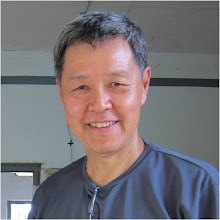The CYP2C family of enzymes is the second most abundant of the CYP enzymes represented in the hepatocyte. The commonest is CYP3A4/5. Correspondingly they are also the second most important enzymes involved in drug metabolism.
There are 4 members of this family, 2C8, 2C9, 2C19 and 2C18, whose genes are all located on chromosome 10. The 2 members of this family that are of greatest importance for us are CYP2C9 and CYP2C10. CYP2C8 came into prominence initially in an association with the cerivastatin induced rhabdomyolysis and later in association with irinotecan metabolism. There has not been a lot of discussions about it lately because of the limited range of substrates linked with it. There is also little known about drug substrates associated with CYP2C18.
CYP2C9, originally known as tolbutamide hydroxylase, has been shown to be involved extensively in the metabolism of many pharmaceuticals. Of topical interest is its involvement with the metabolism with warfarin, particularly the S-isomer.

The Pharmacogenomics Journal (2005) 5, 193–202
The S:R isomeric ration of warfarin concentrations is routinely used as a convenient way of phenotyping the 2C9 activity. The common loss of function genetic variants are the *2 and *3 variants. These variants are much more common among Caucasian populations as compared to East Asians, e.g. Chinese, Japanese and Koreans. In Singapore, the ethnic group which had the highest frequencies of the *2 and *3 variants are the Indians, who had similar frequencies to the Caucasian populations.
CYP2C19 is much more of a preoccupation for us as the *2 and *3 variants are much more common among Chinese than Caucasians. The *2 alleleic variants is particularly common at about 25%. The CYP2C19 was earlier known by the original studied substrate, mephenytoin hydroxylase. The CYP2C19 genetic polymorphism has been discussed largely because if the association of the enzyme with the metabolism of proton pump inhibitors, and lately with the

Comparison of prasugrel 60 mg and clopidogrel 600 mg loading dose exposure of active metabolite by CYP2C19 genetic classification. Box represents median, 25th, and 75th percentiles and whiskers represent the most extreme values within 1.5 times inter-quartile range of the box. AUC, area under the concentration–time curve; EM, extensive metabolizer; RM, reduced metabolizer.








I like your good service.I always appreciate your post.Quite interesting and nice topic chosen for the post Nice Post keep it up.Excellent post.
ReplyDeleteI want to thank you for this informative post.
cyp2c9